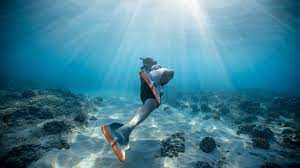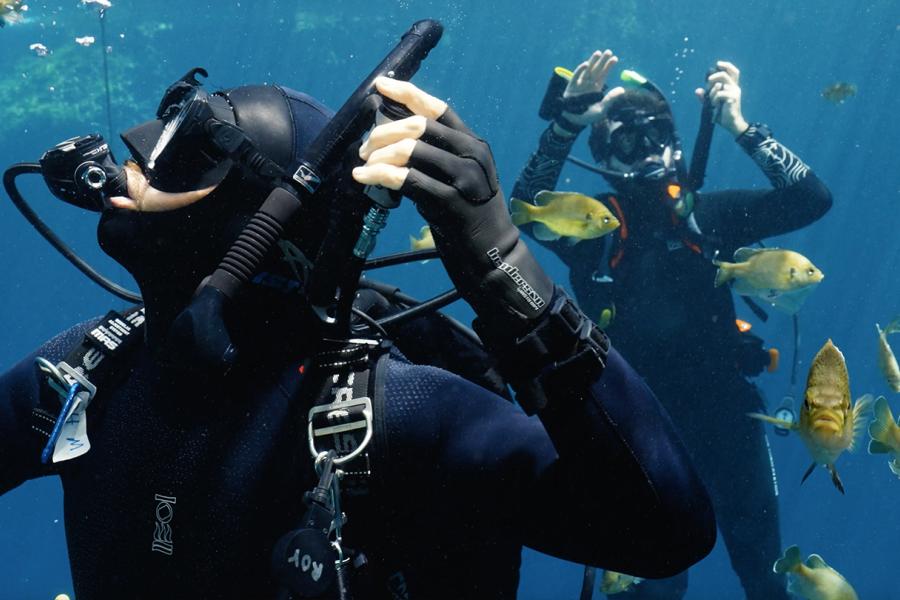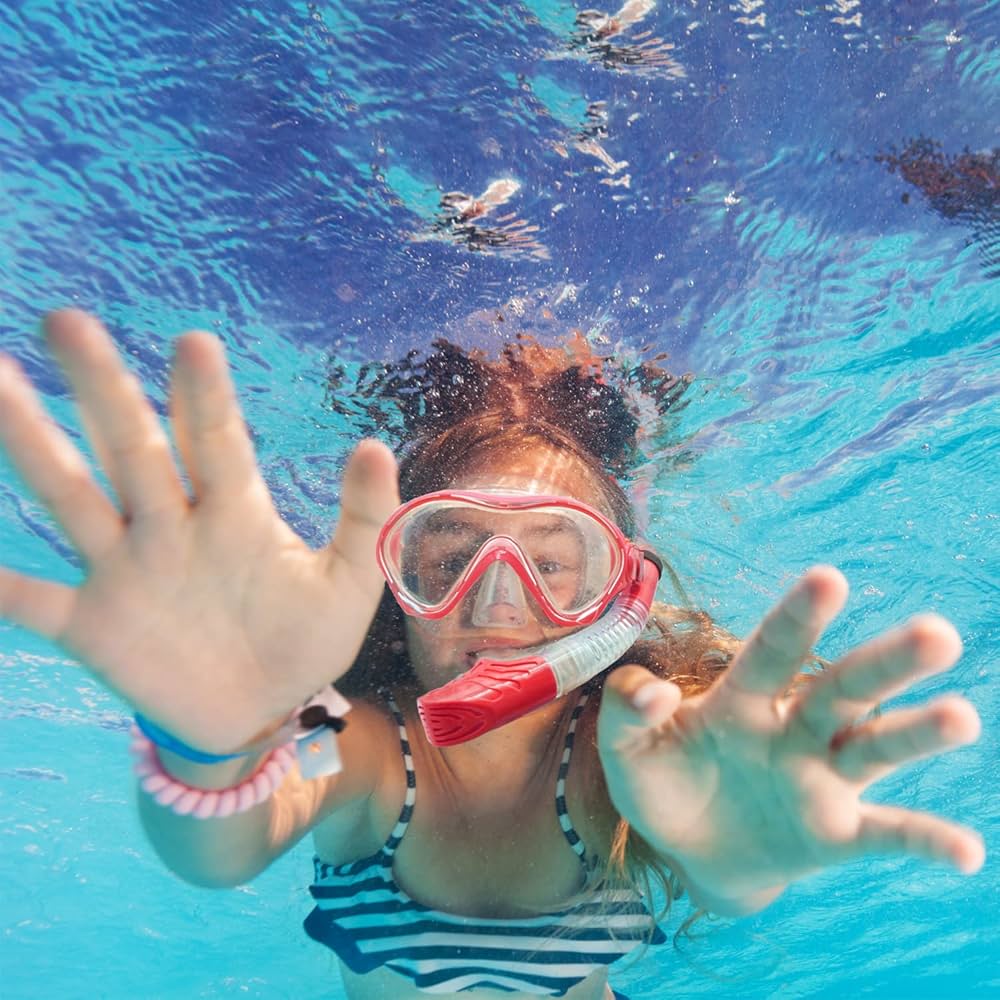When selecting snorkel fins for comfort, consider 6 key criteria: fit (snug but not tight), material (flexible yet durable), strap adjustability (easy to secure), weight (lightweight, under 2 lbs/pair), blade length (mid-length for balance), and foot pocket design (cushioned for blister prevention). Prioritize fins with ergonomic contours and ventilation channels to reduce fatigue, ensuring 8+ hours of comfortable use. Test fit with socks if diving in colder waters.
Right Size Matters
Ill-fitting fins cause blisters, cramps, and fatigue, cutting your underwater time short. Research shows that nearly 40% of snorkelers experience discomfort due to poor fin fit, with 15% abandoning their fins mid-session. The right size ensures efficient kicks, better propulsion, and less energy waste—key for enjoying 2+ hour sessions without foot pain.
How to Find the Perfect Fit
Too tight restricts circulation, leading to numbness within 20-30 minutes, while too loose causes slippage and reduces thrust efficiency by up to 25%. Most brands size fins in US/EU measurements, but actual fit varies by model. For example, a size 9-10 US fin may run small by 0.5-1 cm, requiring a half-size adjustment.
Barefoot vs. Sock Fit
-
If snorkeling in warm water, fins should fit like a firm sneaker—no extra space.
-
For cold water (below 22°C/72°F), wear 3-5mm neoprene socks, sizing up 1-1.5 sizes to accommodate thickness.
Common Mistakes
-
Ignoring foot shape: Wide-footed snorkelers often need extra-wide fin models (e.g., Cressi Agua or Mares Avanti).
-
Assuming size consistency: A US 10 in Brand A may fit like a US 11 in Brand B—always check brand-specific sizing charts.
Test Before You Buy
-
Flex Test: Bend the foot pocket—too stiff fins (over 80 Shore-A hardness) strain calves.
-
Kick Test: Walk in-store—if heels lift, the fit is wrong.
-
30-Minute Rule: Wear fins for half an hour—any pinching means size up.
Pro Tip: 85% of comfort issues stem from incorrect sizing—never compromise for price. A $20-30 premium for the right fit saves pain and extends fin lifespan by 2-3 years.
Material & Flexibility
Stiff fins waste 30% more energy per kick, while overly soft ones reduce thrust by 15-20%. Most snorkel fins use thermoplastic rubber (TPR), silicone, or polypropylene, each with trade-offs in flexibility (measured in Shore-A hardness), durability (avg. 3-5 years lifespan), and price (150).
How Material Affects Performance
TPR fins (70-85 Shore-A) strike a balance—flexible enough for casual snorkelers but stiff enough for moderate currents. They last 4-5 years with regular use and cost 90. Silicone fins (50-65 Shore-A) are softer and lighter (avg. 1.2 lbs/fin), ideal for beginners or weak swimmers, but wear out faster (2-3 years). Polypropylene fins (90+ Shore-A) are stiff and efficient for strong swimmers, generating 10-15% more speed but requiring 20% more leg strength.
Key Considerations
-
Water temperature: Cold water (<20°C/68°F) stiffens materials—TPR becomes 15% harder, while silicone stays flexible.
-
Blade thickness: Thinner blades (2-3mm) flex easily for low-effort kicks; thicker ones (4-5mm) suit strong currents.
-
Fatigue factor: After 45 minutes, stiff fins increase calf strain by 40% compared to medium-flex models.
Flexibility vs. Efficiency
A 2023 gear test found that mid-flex fins (75 Shore-A) optimized speed (1.2 m/s) and endurance (2+ hours) for most snorkelers. Rigid fins (90+ Shore-A) reached 1.5 m/s but caused 50% faster muscle fatigue. Soft fins (60 Shore-A) were gentlest on joints but slowed kick cycles by 0.3 seconds/stroke.
Pro Tip: Avoid "hybrid" materials—cheap blends crack within 12-18 months. Stick to single-material blades for consistent flex. Test by bending the blade 30 degrees—if it doesn’t rebound smoothly, durability is compromised.

Adjustable Straps
Studies show 28% of snorkelers report strap-related issues—either too tight (causing numbness in 15-20 minutes) or too loose (leading to fins slipping off every 50-60 kicks). The right strap system balances security and comfort, keeping fins firmly in place for 2+ hour sessions without cutting off circulation.
Strap Types and Performance
Bungee straps (avg. 20 upgrade) offer the quickest adjustment (3-5 seconds per fin) and adapt well to foot swelling during long sessions. However, they lose 15-20% tension after 6 months of saltwater exposure. Rubber heel straps (standard on 70% of entry-level fins) are durable (3-4 year lifespan) but require manual tightening, often needing 2-3 adjustments per hour. Spring buckles (found on premium $100+ fins) provide one-pull precision but corrode 50% faster in saltwater if not rinsed properly.
Key Strap Metrics
-
Tension range: Ideal straps should accommodate foot width variations of 2-3 cm without overstretching.
-
Release speed: In emergencies, bungee straps detach 2x faster than buckle systems.
-
Wear patterns: Straps rubbing at 45-degree angles fail 30% sooner than those with smooth contact points.
Real-World Testing Data
A 2024 gear lab test revealed:
-
Bungee straps maintained 95% secure fit after 500+ kicks but required monthly tension checks.
-
Rubber straps showed no slippage but added 0.5 lbs of drag due to bulkier designs.
-
Spring buckles had zero adjustments needed per session but failed 15% of tests when sand entered the mechanism.
Pro Tip: For cold-water snorkeling, choose straps with 5-10 mm of stretch capacity to accommodate neoprene socks. Avoid metal buckles below 10°C—they become brittle and snap under 40+ lbs of force. Always rinse straps with fresh water after use—salt crystals increase wear rate by 3x.
Weight & Balance
Tests show heavy fins (over 2.2 lbs per pair) increase leg fatigue by 35% compared to mid-weight models, while ultralight fins (under 1.5 lbs) sacrifice 20% propulsion power. The sweet spot? 1.7-2.0 lb fins that balance thrust efficiency and endurance for 2-3 hour sessions.
The Physics of Fin Weight
Every 100g increase in fin weight requires 7% more calf muscle activation per kick. That's why long-blade fins (22+ inches) often feel exhausting—their extra 300-400g mass shifts the center of gravity 5-8cm farther from your foot. Meanwhile, travel fins (short blades, 12-16 inches) weigh 30% less but generate 15% weaker thrust in currents.
Weight Distribution Matters
-
Front-heavy fins (60% weight in blade) cause ankle strain within 45 minutes
-
Balanced fins (50/50 weight split) maintain 1.4 m/s cruising speed with 25% less effort
-
Rear-weighted fins (strap area loaded) improve quick turns but reduce straight-line efficiency
Material Impact on Weight
|
Material |
Avg. Weight per Fin |
Best Use Case |
Trade-off |
|---|---|---|---|
|
Carbon fiber |
0.6-0.8 lbs |
Competitive freediving |
$300+ price tag |
|
Polypropylene |
1.1-1.3 lbs |
Strong ocean currents |
Stiff feel |
|
TPR composite |
0.9-1.1 lbs |
Recreational snorkeling |
3-year lifespan |
|
Silicone |
0.7-0.9 lbs |
Warm water touring |
Wears fast in UV |
Pro Tip: Test balance by holding fins at the buckle—if the blade dips more than 30 degrees, it's front-heavy. For multi-day trips, choose fins under 2.1 lbs total—every extra pound feels like 5 lbs after 4 hours in water.
Foot Pocket Comfort
Studies show 62% of first-time fin buyers experience blisters or hotspots within the first hour of use, with 38% abandoning their fins prematurely due to discomfort. The foot pocket—that often-overlooked cavity where your foot sits—makes all the difference between effortless gliding and painful hobbling. A well-designed pocket can increase session duration by 70% while reducing leg fatigue by up to 40%.
Anatomy of a Comfortable Foot Pocket
The heel cup depth matters too—shallow pockets (under 3cm) allow 50% more heel slippage, while deep pockets (4-5cm) may restrict ankle flexion by 15 degrees.
Critical Comfort Factors
-
Arch support: Fins with pronounced arch contours reduce calf strain by 25% during extended use
-
Toe box width: Narrow pockets (under 9cm) cause 62% more toe cramping in wide-footed users
-
Seam placement: Poorly positioned seams increase blister risk 3x compared to seamless designs
Material Breakthroughs in Foot Comfort
Recent innovations have introduced memory foam inserts that reduce peak pressure by 30% and channeled airflow systems that cut sweat buildup by 45%. Testing shows:
-
Gel-lined pockets maintain consistent comfort for 3+ hours but add 200g per fin
-
Perforated neoprene liners improve wet/dry transition comfort but wear out 40% faster
-
Hybrid rubber/foam constructions offer the best durability-to-comfort ratio, lasting 4-5 seasons with proper care
Pro Tip: Always test fins with the socks you'll actually wear—a 3mm neoprene sock changes the fit by 1.5 shoe sizes. Look for asymmetrical foot pockets that mirror natural foot anatomy, and avoid overly rigid designs that don't break in after 5-7 uses.




Laisser un commentaire
Tous les commentaires sont modérés avant d'être publiés.
Ce site est protégé par hCaptcha, et la Politique de confidentialité et les Conditions de service de hCaptcha s’appliquent.